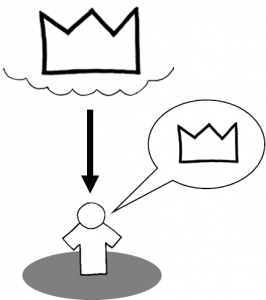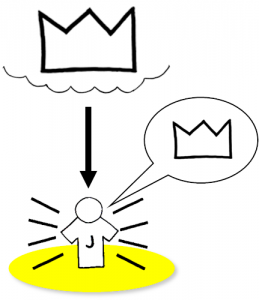In Genesis 1:27 we read that ‘God created mankind in his own image, in the image of God he created them’. However, the passage doesn’t define what “Image of God” means. Consequently “Image of God” has been interpreted in a vast number of ways throughout church history. Does it refer to human capacity for reason, free will, relationship, creativity, ethical conduct, or something else? It doesn’t take too long to hear interpretations that seem self-serving, as though “Image of God” refers to whatever I think is important in life. The philosophers think it refers to reason, the artists think it’s about creativity, the counsellors think it’s about relationship, and so on. Does the Bible give us any way of working this out?
The Bible’s teaching on the Image of God can be summarised as three mutually-complementary ideas: capability, occupation, and destiny.
These themes develop as the Bible’s teaching unfolds and God introduces more about himself and his plan for humanity. Since each point shapes the others, it is important to recognise that when the Bible teaches us more about one theme we also learn more about the other two by implication.
1) Image as Capability

First, the Image of God is what distinguishes us from mere animals. Humans were created on the same day as the land animals. In one sense we are grouped among them (Genesis 1:24-26). What distinguishes us from them is being in God’s image. This invites us to ask: ‘what differences are there between people and animals?’ Most of what we observe in answer to that question will directly relate to the Image of God. Immediately we see lots of capabilities unique to human beings.
Most prominent in Genesis 1 is our relational capacity. The man and woman relate to God and to one another. God addresses them in speech and gives them commands. Humans speak, reason, relate, and are morally responsible before God. Other creatures are not personal in this way.
2) Image as Occupation
In the ancient world there were images and idols of gods everywhere. Idols were designed to express the attributes of the god their represented and the gods were supposedly present through them. To see the idol was to see what the god was like; to serve the image was a way of serving the god himself.

In contrast, idolatry is the most fundamental sin in the Bible. It’s hard to overstate how evil idolatry is in God’s sight. Get this wrong and it doesn’t matter what else you get right. The Ten Commandments start with forbidding idols and images of God (Exodus 20:4-6). Idolatry is the sin that sealed the downfall of many an Israelite king and every Israelite kingdom. Idols are ridiculous and offensive to God. How could they be capable of representing God? They are lifeless, unresponsive, and completely absent of all of God’s attributes. They divert worship from the true God to give it to a feeble block of wood or stone instead. To commit idolatry is to cut yourself off from relationship to the true and living God.

Making images of God is also wrong because God has already created an image to represent himself in the world: us. We could say that human beings are the one authorised idol of God. This is the purpose of the unique capabilities that God has equipped us with. We have an occupation and mission that we are called to fulfil in the world. By making us in his image God says to us: “don’t make idols to represent me in the world; that’s your job!”
Human beings are called express God’s rule and management of the world (Genesis 1:28). We are made to shine forth his character and purpose. As the biblical story progresses God tells us more of his commands and plans and shows us more of his character to imitate. As we listen to his voice in the Bible we learn more and more how to live out our occupation as his image-bearers.
3) Image as Destiny
The greatest step that God took in telling us about himself was sending his Son to become one of us. In Jesus we not only meet God, but we meet ourselves in God’s image: ‘The Son is the image of the invisible God, the firstborn over all creation.’ (Colossians 1:15).

Jesus possesses all the attributes of God (Colossians 2:9). He is uniquely capable of representing him in the world. He lived out God’s character in full sight, the ultimate image of God for all with eyes to see. Jesus lived out the occupation that is comes with being in God’s image. He came to do the will of God (Hebrews 10:7). By his death and resurrection he regained the rule over creation that we had squandered (Hebrews 2:5-9).
When we see Jesus we simultaneously see what God is like and what we are supposed to look like as his image-bearers. Not only that, but because of the grace of the gospel, we also see that this is our destiny in Christ as his image-bearers. All those in Christ are destined to be part of Jesus’ new creation and to share in the likeness of Jesus (1 John 3:2). We were created to be adopted siblings of Christ, coheirs of his inheritance, members of the family of God.
The Image of God as the Image of Jesus
Meeting Jesus forces us to re-evaluate what it means to be made in God’s image. Being in God’s image is ultimately about being in the image of Jesus. We never truly embrace what we were created to be until we become his disciples. To be in God’s image is to be created with the capability to look like Jesus, to have the occupation of serving and representing him in the world, and to be destined for resurrection in his likeness.
